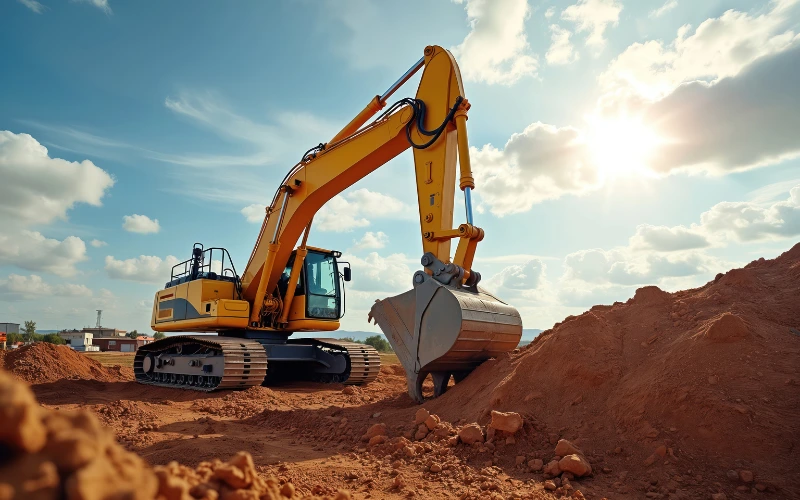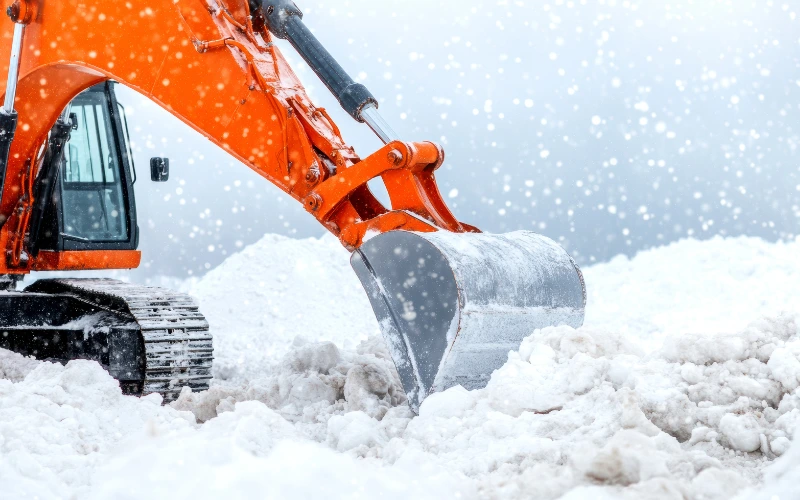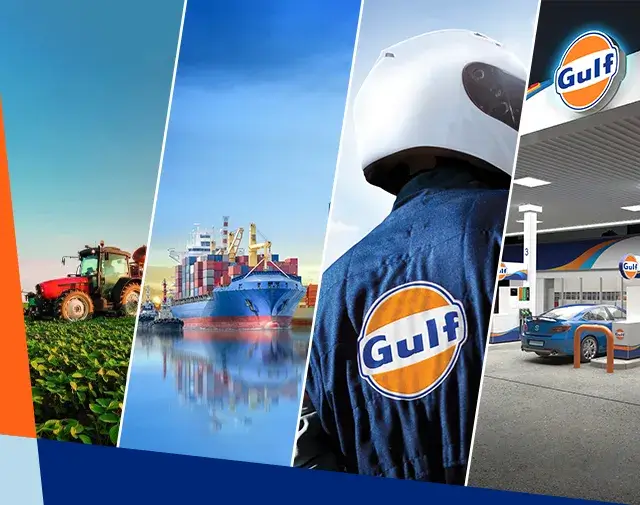Beating the heat (and cold): Lubrication tips for harsh climate conditions
18 Sep 2025

Extreme climates put an enormous amount of stress on off-road equipment. Hot temperatures can cause lubricants to become too thin, reducing their protective properties, while cold temperatures can make engines difficult to start, and lubricants can become thick and sluggish.
That’s why an effective lubricant strategy is crucial to maintaining performance and ensuring equipment longevity. In this guide, we’ll cover the challenges of operating in harsh climates and how you can overcome them with robust equipment lubrication.
Understanding climate stress on lubricants
Extreme temperatures, at either end of the spectrum, can put extreme stress on machinery and impact engine performance.
Hotter climates can make lubricants thinner and less viscous, so they become less effective and cause increased wear. Not only that, but hot climates can also accelerate oil oxidation, which breaks down the chemical composition of the oil quicker and reduces its effectiveness. The strength of the lubricant’s film is also affected, as it becomes thinner and less able to protect components effectively.
Meanwhile, cold temperatures can lead to lubricants becoming thicker and more viscous, which prevents them from being able to flow freely and effectively. This thick, sluggish-flowing oil can lead to startup wear as it cannot lubricate components quickly enough.
Poorly performing lubricants can lead to accelerated wear, equipment downtime and cause costly breakdowns and repairs. That’s why climate-adaptive lubricants are essential when operating in extreme or fluctuating temperatures.
Choosing the right lubricants for extreme heat
Operating off-road equipment in extremely hot climates puts significant stress on components, accelerating wear, oxidation and the risk of failure. Using the right lubricants is crucial to ensuring reliability, extending service life and managing operational costs.
For heavy-duty uses like mining haul trucks, quarry loaders and construction dozers operating in temperatures over 40°C, it is essential to use lubricants with the following characteristics.
Extreme climates put an enormous amount of stress on off-road equipment. Hot temperatures can cause lubricants to become too thin, reducing their protective properties, while cold temperatures can make engines difficult to start, and lubricants can become thick and sluggish.
That’s why an effective lubricant strategy is crucial to maintaining performance and ensuring equipment longevity. In this guide, we’ll cover the challenges of operating in harsh climates and how you can overcome them with robust equipment lubrication.
Understanding climate stress on lubricants
Extreme temperatures, at either end of the spectrum, can put extreme stress on machinery and impact engine performance.
Hotter climates can make lubricants thinner and less viscous, so they become less effective and cause increased wear. Not only that, but hot climates can also accelerate oil oxidation, which breaks down the chemical composition of the oil quicker and reduces its effectiveness. The strength of the lubricant’s film is also affected, as it becomes thinner and less able to protect components effectively.
Meanwhile, cold temperatures can lead to lubricants becoming thicker and more viscous, which prevents them from being able to flow freely and effectively. This thick, sluggish-flowing oil can lead to startup wear as it cannot lubricate components quickly enough.
Poorly performing lubricants can lead to accelerated wear, equipment downtime and cause costly breakdowns and repairs. That’s why climate-adaptive lubricants are essential when operating in extreme or fluctuating temperatures.
Choosing the right lubricants for extreme heat
Operating off-road equipment in extremely hot climates puts significant stress on components, accelerating wear, oxidation and the risk of failure. Using the right lubricants is crucial to ensuring reliability, extending service life and managing operational costs.
For heavy-duty uses like mining haul trucks, quarry loaders and construction dozers operating in temperatures over 40°C, it is essential to use lubricants with the following characteristics.
| Characteristic | Benefit |
| High viscosity index (VI ≥ 150) | Maintains stable film strength across a range of temperatures, protecting gears, bearings and hydraulic systems under heavy loads |
| Thermal and oxidative stability | Delay oil degradation to help extend drain intervals and reduce maintenance costs |
| Anti-wear and extreme pressure additives | Provide reliable protection against micropitting, gear tooth fatigue and scuffing in heavily loaded components |
| Seal compatibility | Prevents leaks that can occur as seals are exposed to high heat and pressure over extended periods |
It is important to choose lubricants that meet or exceed relevant OEM specifications for your equipment, such as Caterpillar TO-4, Komatsu KES 07.868.1, other heavy-equipment standards and your owner manual.
Operators should also implement regular condition monitoring through oil analysis to identify early signs of oxidation, contamination or viscosity loss.
Lubrication in freezing conditions
Off-road equipment operating in sub-zero environments faces unique lubrication challenges that, if not addressed, can lead to startup wear, hydraulic failures and costly downtime. Selecting climate-adapted lubricants is critical to maintaining performance and equipment protection in these demanding conditions.
For applications such as forestry equipment, snow removal fleets, or mining machinery operating in temperatures below -20°C, it is essential to use lubricants with:
Low pour point
Lubricant with a pour point at least 20°C below the coldest expected ambient temperature. This ensures oil remains fluid and flows quickly at engine startup, which prevents metal-to-metal contact during initial cranking.
High cold temperature fluidity and pumpability
This means critical components are lubricated faster to reduce the risk of cavitation damage in hydraulic systems as well as bearing and gear wear.
Shear stability and consistent viscosity
Allows lubricants to flow easily at startup while preventing thinning during load spikes at operating temperature.
Synthetic formulations
Full synthetic lubricants have superior cold flow properties and are better at resisting thickening at lower temperatures in comparison to mineral-based oils.
Selecting lubricants that meet or exceed OEM specifications for cold-climate performance is key — for example, fluids approved under standards such as Caterpillar HYDO Advanced or Komatsu KES 07.868.1 for hydraulic systems.
Regular oil condition monitoring is recommended to detect contamination from condensation, loss of viscosity, or additive depletion.

Best practices for operating in harsh environments
While operating in extremely hot or cold conditions comes with additional challenges, there are many things you can do to offer extra protection to your equipment and ensure it operates smoothly.
-
Regular oil analysis and preventive maintenance
Predictive and preventive maintenance allow you to analyse the condition of your lubricants and determine a baseline. You can then form a maintenance schedule to monitor the condition of lubricants and top up or replace them to prevent damage that may lead to unexpected downtime and costly repairs.
-
Proper storage and handling of lubricants
Ideally, lubricants should be stored indoors or under a shelter at a moderate temperature. If you have no choice but to store them outdoors, ensure they are protected from wind, rain and snow in a robust shelter and correctly sealed and labelled to prevent contamination.
-
Using the right filters and additives
Filters protect your engine from impurities that can lead to engine damage, so it’s important to clean or replace these regularly to improve performance. Meanwhile, additives enhance performance and lubricant longevity so they can better protect equipment components over time.
A smart lubrication strategy for extreme conditions
Operating off-road equipment in extreme heat or freezing conditions presents significant challenges that can increase wear, drive up maintenance costs and impact uptime. By selecting lubricants designed for these harsh environments and supported by regular condition monitoring, fleet managers can reduce unplanned downtime, extend equipment life and control cost per operating hour.
Gulf’s climate-adapted lubricant range, combined with our Gulf CARE oil analysis programme, helps operators in mining, construction, forestry, and other demanding sectors build resilient maintenance strategies. Our experts can work with you to tailor solutions that protect your equipment, maximise reliability and support your business goals — no matter the conditions.
Learn more about how Gulf’s products and services can help your fleet perform at its best.

